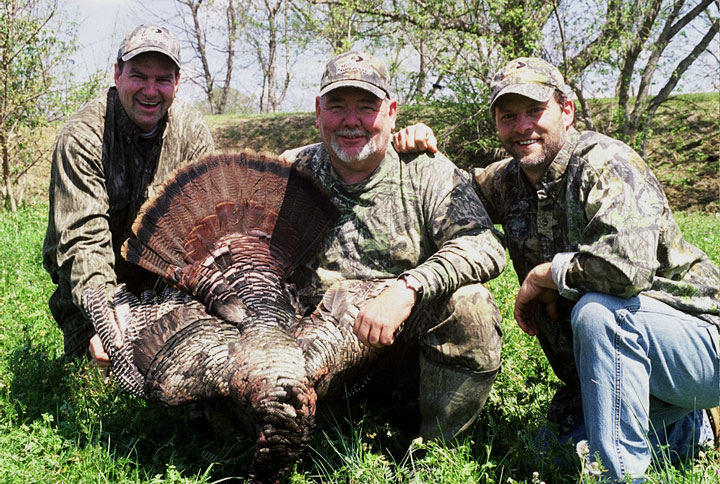When do you start scouting for turkey season?
Turkeys often move between fall and spring, so don’t rely strictly on deer season for your information. Deer season sightings are great but aren’t enough. Use your feet and walk the woods as much as possible during the weeks prior to the season. Look for scratching, feathers and tracks and try and figure out where turkeys are feeding and roosting. Ask people who travel the rural roads often. The mailman can be a great person to ask if you’re looking for areas where turkeys hang out. Try and have multiple locations picked by the time opening day rolls around. You never know when another hunter may have been scouting the same area and made it there first.
How close should you get when setting up to a turkey on the roost?
The answer to that is simple. As close as you can without spooking the turkey. This is where it can get complicated. First, you have to know the terrain. Are there any obstacles that could hang the gobbler up? Creeks, fences, even thick cover can stop a gobbler dead in his tracks. You also need to determine how quiet you can make your approach. If you’re walking in dry leaves, then you can’t get very close. If the woods are damp and the foliage is still heavy, then you can get closer. You also need to realize that other turkeys are probably roosted nearby. The gobbler sounding off is very seldom the only turkey roosted in that area. A good rule of thumb is to err on the side of setting up too far away. You can always let the morning unfold and move as you need to.
What should you do after the fly down is over and the gobbler that was sounding off like crazy has shut up?
Chances are you were set up on a gobbler that simply moved away with his hens. This is most often the case. Some people think that their calling was bad or they were spotted. Nine times out of ten its just hens that are the problem. There are several things to do once you’re convinced the gobbler has moved on. Try and keep the gobbler sounding off so you can determine what direction the group is headed. Try to get in front of the flock and cut them off. If you scouted the area ahead of time you may have a good idea where they’re headed. It could be a field a favorite ridge or maybe a pasture. If the turkeys get away clean, leave the area and come back a few hours later. Try to find a loud sharp call that can provoke a response from the gobbler. A high-pitched box, tube or maybe a loud slate can serve as your locator.
How much should I call to a gobbler on the roost?
Most turkey hunters will tell you that calling to a gobbler while he’s still in the tree is one of those things you should absolutely NOT do. In some cases, this is good advice. The thinking here is if a gobbler is sounding off loud and often, then he may actually call up another hunter. This could be true. If you’re hunting an area you share with other hunters then you don’t want to have them walk into your setup. If this is the case, then try a soft yelp or tree call. If the gobbler answers, sit tight and listen for him to fly down.
What happens if I make a mistake while calling?
Like people, turkeys have different voices and they produce “personalized” sounds. They make mistakes when calling, so don’t put pressure yourself to be perfect. Some of the worst sounds you’ll hear in the spring woods will come from the turkeys. In the beginning, concentrate on one or two calling devices and spend most of your time locating turkeys. The basic calls will work fine once you’re in the right position.
What is the biggest obstacle in turkey hunting?
Fool the eyes of a wild turkey and you’ve pulled off one of the toughest challenges in hunting. Mossy Oak was born in the turkey woods and since the first pattern that Toxey Haas designed more than 20 years ago, turkeys are still more than a passion, they’re an obsession at Mossy Oak. But even with the best patterns in the turkey woods, there are still things to check to make sure you’re hidden as well as possible.
Check your boots for any shine and make sure the sole of your boots are dark or drab colored. If you don’t wear knee-high boots, make sure you have dark-colored socks and purchase your pants a few inches longer than normal, so they don’t rise above your boots when sitting down. Make sure your gloves cover all your wrist and there is no skin exposed between the end of your glove and your shirt sleeve. Look for anything shiny and cover it - a watch, a ring, hat logo - check everything that might look out of place in your setup. Carry an extra headnet and gloves, and it’s a good idea to throw some face paint in your vest in case you lose your face mask or gloves. Attention to the smallest detail may not be necessary on every setup but for those times your setup is less than perfect, great camo can make all the difference.































